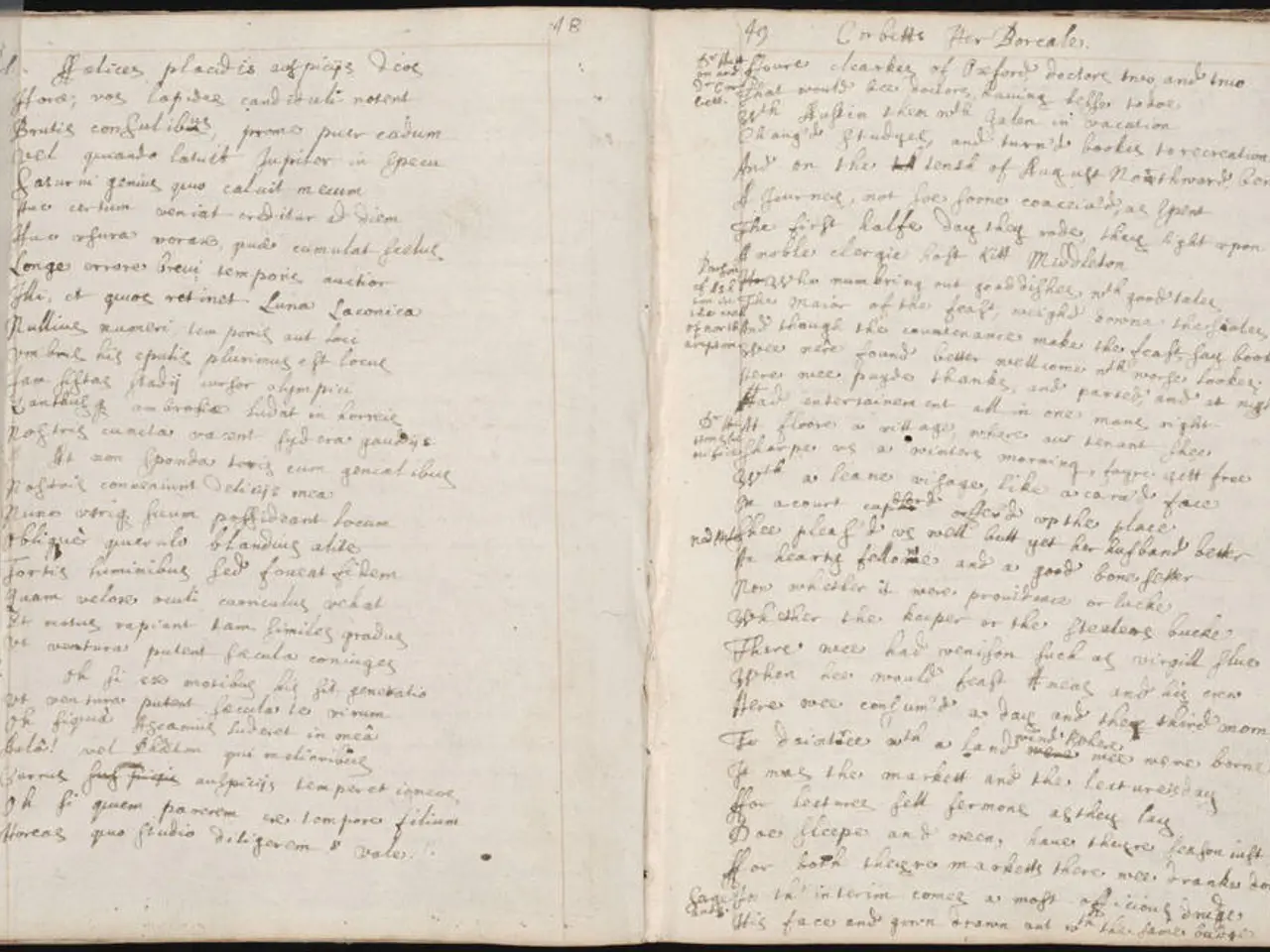Guidelines for Crafting a History Research Document
In the world of academia, writing a history research paper can often feel like joining a complex, ongoing conversation. But fear not, for this article provides valuable guidance on finding your space in this 'scholarly conversation'.
Background Reading and Narrowing the Topic
The journey begins by selecting and narrowing your research topic. Utilize library databases and keyword searches to find relevant books and articles. Immerse yourself in these sources, understanding various perspectives, noting both supporting and conflicting viewpoints. This stage involves critical evaluation and synthesis of secondary literature and primary sources to build a foundation for your paper[1][5].
Developing Themes and Context
As you read, identify key themes, historical contexts, and historiographical debates related to your topic. Organize information by grouping ideas and evidence into thematic categories, which will help clarify the historical narrative and frame your research within broader scholarly discussions[1][5].
Preparing an Argument (Thesis Development)
Formulate a clear, concise thesis statement that presents your main argument or interpretation based on your analysis of the sources. Assess how the evidence supports or challenges this thesis, and be prepared to revise it as you deepen your understanding of the topic[2].
Outlining the Argument
Create an outline that structures your paper logically. This generally includes an introduction, body paragraphs, and a conclusion[1][2][3][4].
Preparing for Writing
Plan your writing by aligning your evidence and sources with different parts of your outline. Annotate your supporting documents and decide where to incorporate primary and secondary sources. This preparation also includes deciding on citation methods to document sources accurately[1][2][3].
Writing Process
Write the paper beginning with the introduction or summary, followed by fleshing out the body paragraphs according to the outline, and concluding by reinforcing your thesis with supporting evidence. Review and revise the paper to ensure clarity, coherence, and logical flow. It can be helpful to revisit and revise the introduction to reflect the final structure of your paper[3][4].
These steps together form a methodical approach to researching and writing a history paper that is well-supported, clearly argued, and contextualized within existing scholarship.
This guide is particularly relevant to research-based courses, such as the Junior Paper (JP), and resources like the Seeley G. Mudd Manuscript Library can provide valuable materials for your research. Remember, an undergraduate student does not need to come up with a blindingly original theory for a history research paper. Instead, focus on developing an argument that contributes to the ongoing scholarly conversation in a meaningful way.
Gathering research materials, notes, and snacks prepares one for the writing process. Outlining the argument helps organize notes and evidence for each stage of the paper. Writing down the stages of the argument before starting the paper provides a solid roadmap to work from. Setting reasonable goals and breaking the project into constituent phases can make the task seem less daunting. Developing an argument involves identifying gaps in scholarship or coming up with an argumentative response to a class prompt. The goal of background reading is to identify intriguing angles to approach the topic from and observe trends across sources. Understanding the thematic context of the time period in which events occurred is crucial for a successful history research paper.
[1] FitzGerald, S. (2021). Writing a History Research Paper: A Guide for Undergraduate Students. The Princeton University Library. [2] The University of Chicago Writing Program. (2021). The Art of Argument in Writing: Strategies for Persuasion. The University of Chicago. [3] The University of Chicago Writing Program. (2021). The Art of Writing: Writing a Research Paper. The University of Chicago. [4] The University of Chicago Writing Program. (2021). The Art of Writing: Writing a Research Paper: The Research Process. The University of Chicago. [5] The University of Chicago Writing Program. (2021). The Art of Writing: Writing a Research Paper: The Writing Process. The University of Chicago.
- For students working on a Junior Paper, independent work is essential in developing an argument that contributes to the education-and-self-development of students, providing valuable insights into history and strengthening their online-learning skills.
- In the process of preparing for writing a research paper, understanding the thematic context and historiographical debates is crucial, as it enables students to join the scholarly conversation with original and thoughtful analysis, thereby widening the scope of learning and knowledge in their chosen field.




